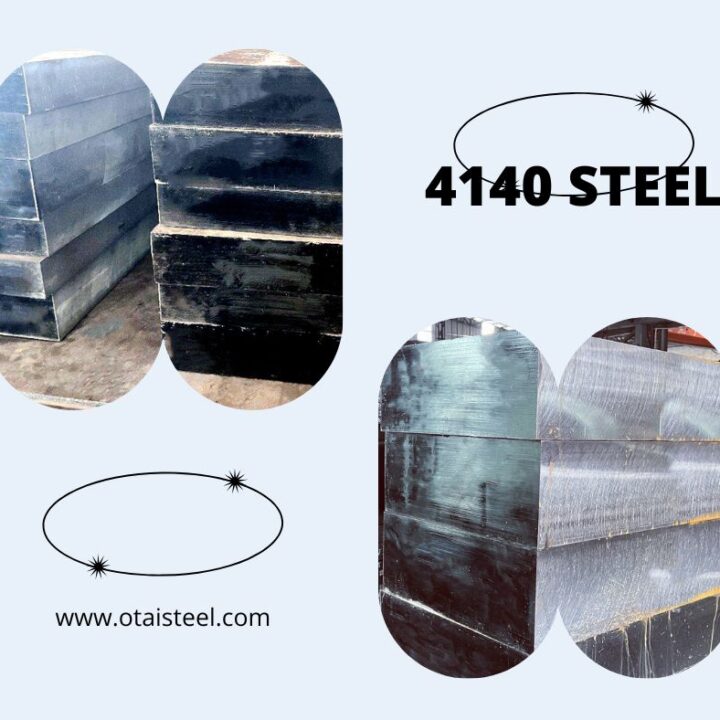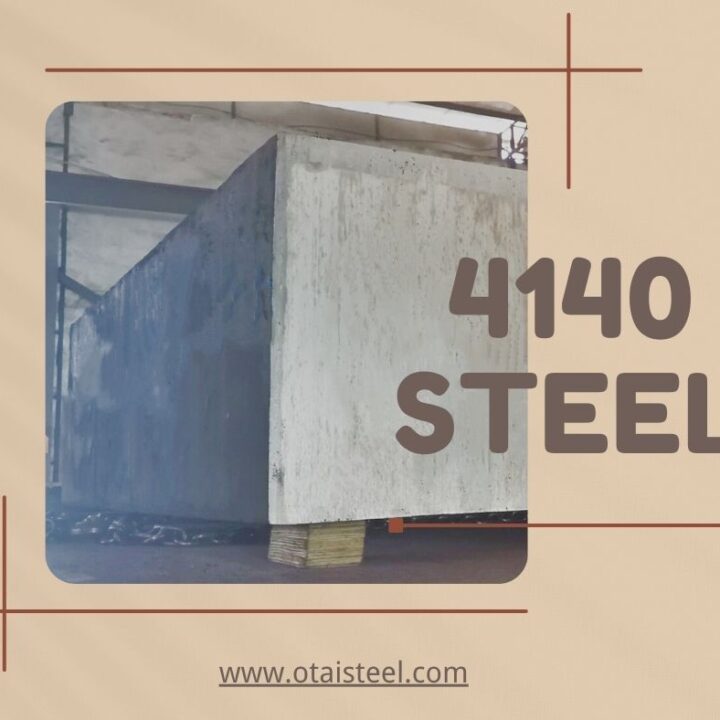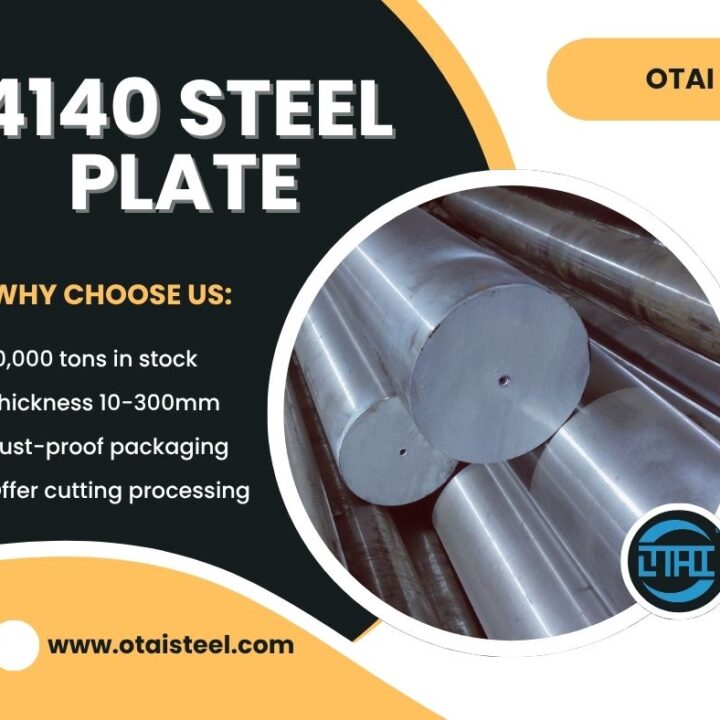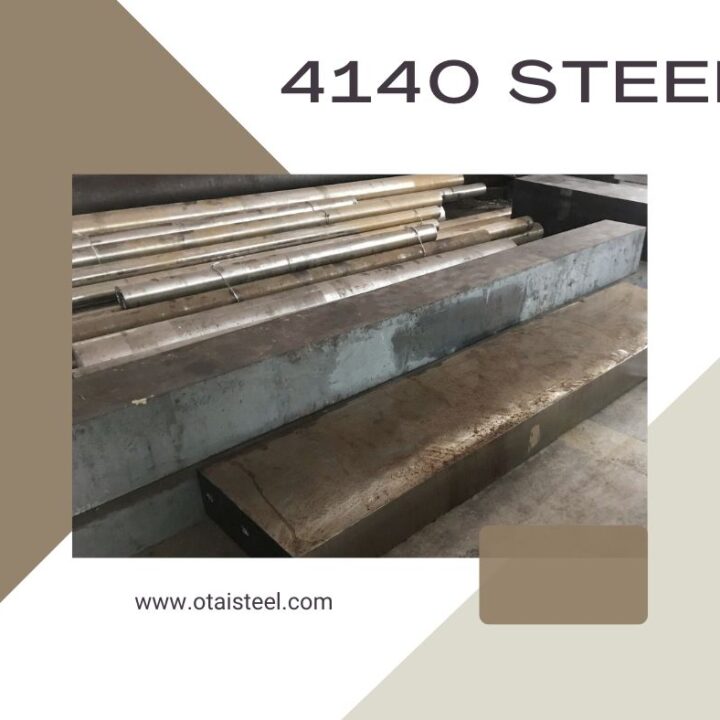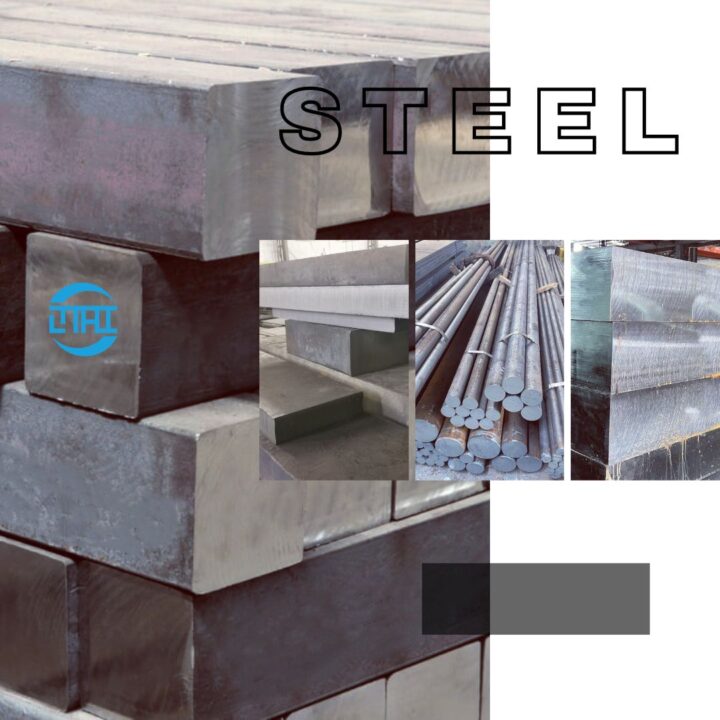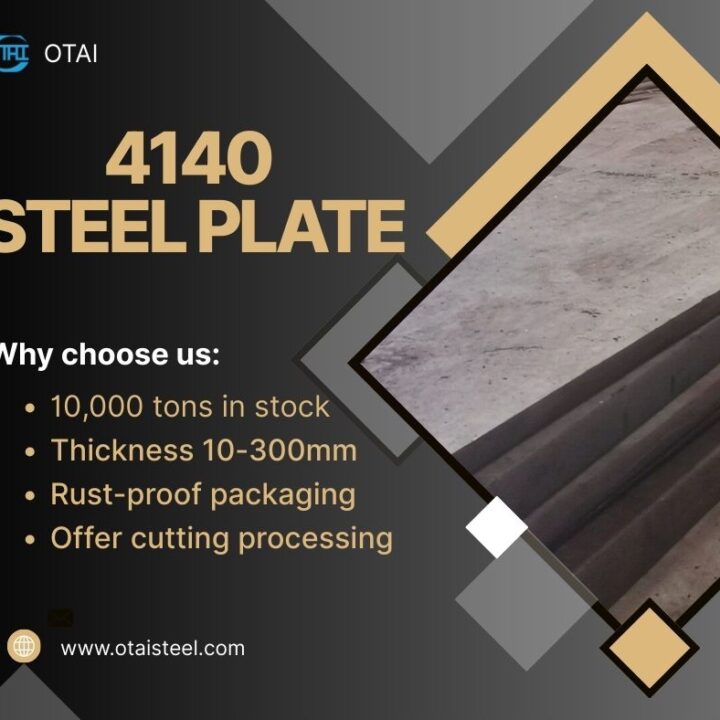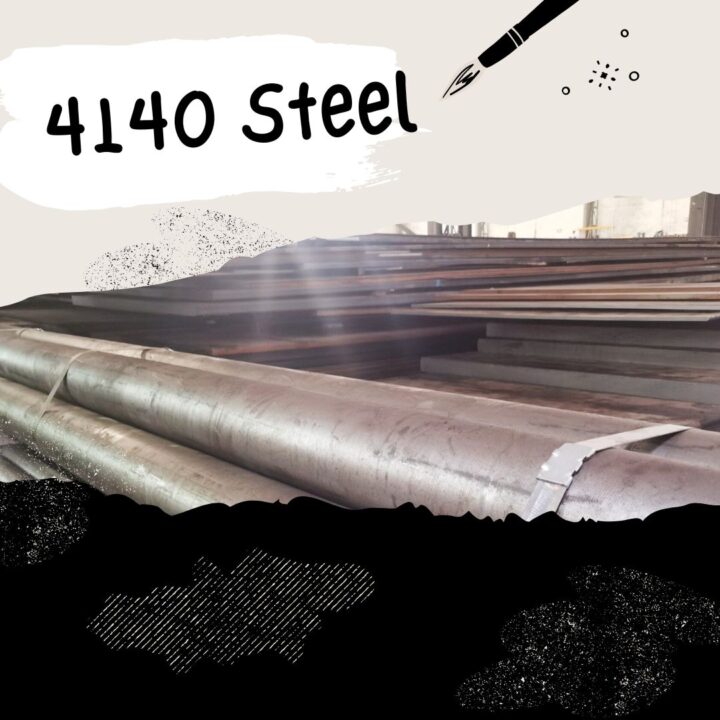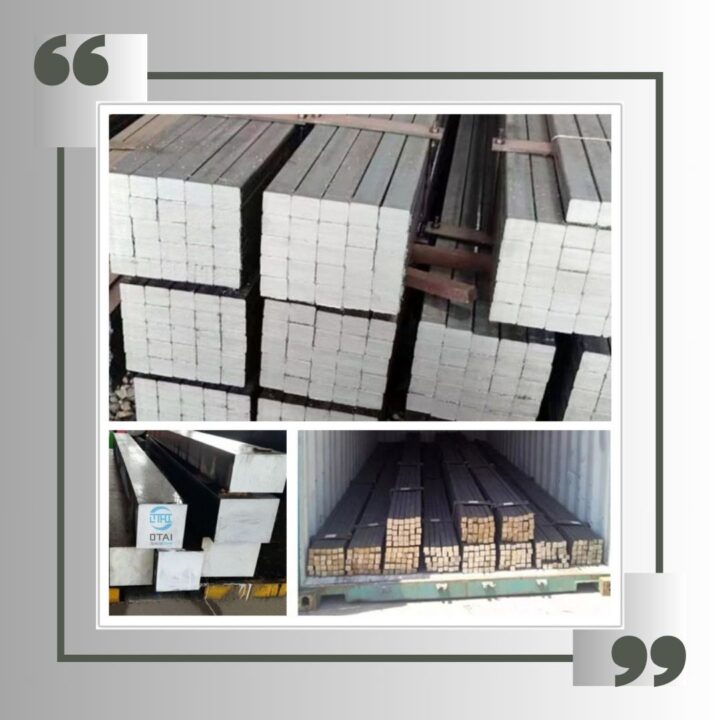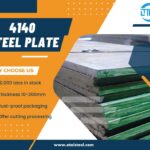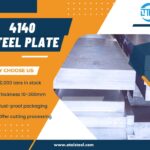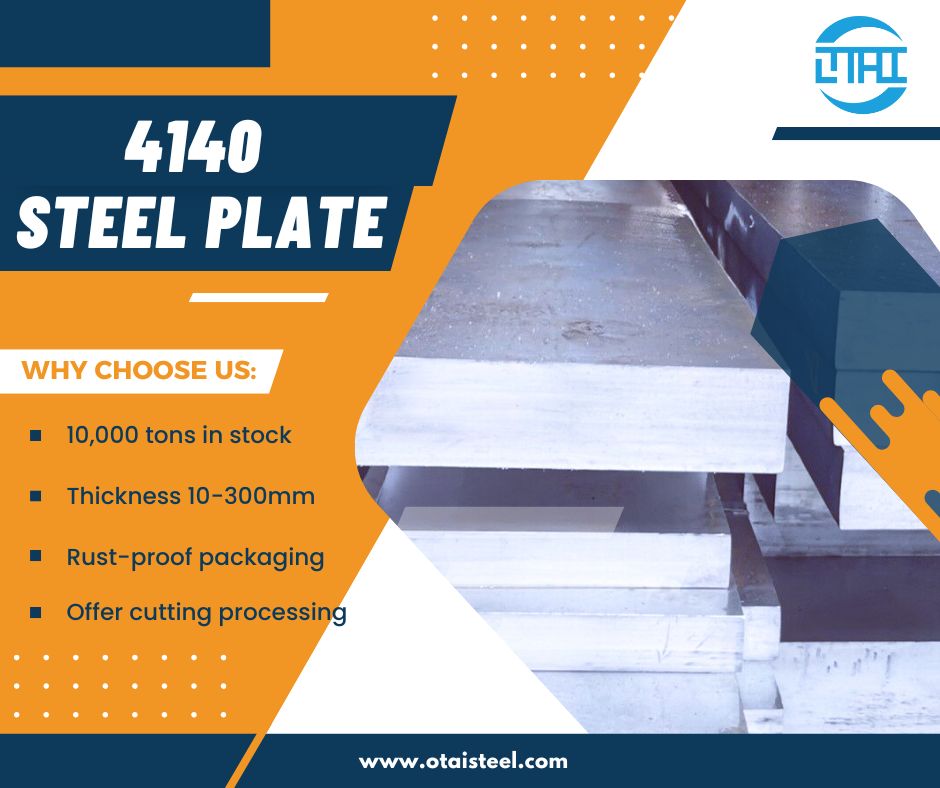 4140 Alloy Steel Mechanical Properties: What You Really Need to Know Before You Order
4140 Alloy Steel Mechanical Properties: What You Really Need to Know Before You Order
If you’re working on shafts, gears, mold bases, or any high-stress component, 4140 alloy steel is probably one of the first grades you’ve considered.
And that makes sense—4140 is one of the most versatile alloy steels we supply here at Otai. But still, almost every week, we get similar questions from engineers, purchasing managers, and machine shop owners:
- “What’s the real strength of 4140 steel?”
- “How much harder can it get after heat treatment?”
- “Can it handle impact and fatigue in my application?”
So, we decided to break it all down in one place. Here’s the real-world guide to 4140 alloy steel mechanical properties, based on actual supply experience—not just textbook numbers.
🔩 What Is AISI 4140 Alloy Steel?
4140 is a chromium-molybdenum alloy steel (Cr-Mo steel) with medium carbon content—around 0.40%. It’s known for combining high tensile strength, decent toughness, and good wear resistance, especially after heat treatment.
You’ll find 4140 in:
- Transmission shafts and spindles
- Hydraulic cylinder rods
- Gears and splines
- Mold bases
- High-strength bolts and fasteners
- Drilling and mining tools
We stock it in both annealed and quenched & tempered (Q&T) conditions, depending on the customer’s machining plan.
📊 Key Mechanical Properties of 4140 Steel (Q&T Condition)
Here’s what you typically get with properly heat-treated 4140:
| Property | Typical Value |
|---|---|
| Tensile Strength | 850–1000 MPa (123–145 ksi) |
| Yield Strength | ~655 MPa (95 ksi) |
| Hardness (HRC) | 28–32 HRC (after Q&T) |
| Elongation | ~25% |
| Impact Toughness | Good (Charpy V ≥ 50 J at -20°C) |
| Fatigue Strength | Moderate to High |
| Modulus of Elasticity | 205 GPa |
| Density | 7.85 g/cm³ |
📌 Tip: These are typical results after quenching and tempering. If you’re buying as-rolled or annealed 4140, don’t expect the same performance unless you heat treat it.
🔥 Heat Treatment Makes a Huge Difference
4140’s mechanical properties depend heavily on how it’s processed. Here’s a simple breakdown:
| Condition | Tensile Strength | Hardness | Use Case |
|---|---|---|---|
| Annealed | ~600–650 MPa | ~170–200 HB | Easy machining, needs later heat treat |
| Normalized | ~700–800 MPa | ~220 HB | Better strength, still machinable |
| Quenched & Tempered | 850–1000 MPa | 28–32 HRC | Final condition for critical parts |
| Nitrided | Core: same as Q&T | Surface: 50–55 HRC | For wear resistance, mold bases |
🔧 One of our U.S. customers used to order 4140 in the annealed state for large mold plates, then heat treat it themselves. But when they switched to our in-house Q&T supply, they saved both cost and turnaround time.
🛠 4140 Steel in Real Applications
Some grades look good on paper but fail in real life. Not 4140.
We’ve supplied 4140 to companies in oil & gas, construction, mold manufacturing, and automotive. Here’s how it performs in key areas:
- Fatigue resistance: Performs well in shafts and rotating parts—but not as high as nickel-based steels like 4340.
- Wear resistance: Q&T or nitrided 4140 holds up well in mold bases and press tooling.
- Impact toughness: With proper tempering, 4140 resists cracking even at low temps.
📌 Reminder: 4140 is not stainless—if corrosion is a concern, surface treatment or coating is needed.
🧪 Don’t Forget to Confirm Heat Treatment When You Buy
One of the most common issues we see?
Clients buy 4140 expecting Grade 8-like performance, but receive annealed or normalized stock without realizing it.
👉 If you’re designing for strength, fatigue, or wear—always confirm the heat treatment status. Ask for a test report with:
- Hardness (HB or HRC)
- Tensile/Yield Strength
- Heat treatment method (Q&T, N+T, etc.)
At Otai, we provide UT test reports, hardness checks, and full MTCs with every delivery.
⚙️ 4140 vs Other Materials: How It Stacks Up
| Property | 4140 (Q&T) | 1045 Carbon Steel | 4340 Alloy Steel |
|---|---|---|---|
| Tensile Strength | 850–1000 MPa | 600–700 MPa | 930–1100 MPa |
| Yield Strength | ~655 MPa | ~450 MPa | ~850 MPa |
| Hardness (HRC) | 28–32 | ~170–200 HB | 35–45 |
| Toughness | Good | Moderate | Very High |
| Cost | Medium | Lower | Higher |
Use 4140 when you need a good balance between performance and cost. Go for 4340 if toughness is critical (like in aerospace or high-shock parts). Stick with 1045 for basic parts or low-load applications.
📦 Why Customers Worldwide Choose Otai for 4140 Steel
We’re not just another supplier—we’re a full-service solution partner.
- ✅ Over 10,000 tons of 4140 steel in stock
- ✅ Cut-to-size service (6mm–300mm thickness)
- ✅ Available in annealed, Q&T, or custom nitrided condition
- ✅ Full MTC, hardness test, UT inspection, and third-party certification (SGS, BV, etc.)
- ✅ Shipped to 30+ countries, including top brands like Thyssenkrupp, Schlumberger, and Borealis
Need help selecting the right size or treatment? Just send us your drawings.
📧 jack@otaisteel.com
📱 WhatsApp: +8676923190193
❓ FAQs – 4140 Alloy Steel Mechanical Properties
1. Is 4140 stronger than 1045?
Yes—especially after heat treatment. 4140 has higher tensile and yield strength, plus better fatigue and wear resistance.
2. Can 4140 steel be used for high-stress shafts?
Absolutely. It’s widely used in drive shafts, axles, and transmission parts—just make sure it’s Q&T treated.
3. What is the maximum hardness of 4140?
In nitrided condition, surface hardness can reach HRC 55. But core remains around 28–32 HRC in Q&T state.
4. Can I weld 4140?
Yes, but you must preheat and post-heat to avoid cracking. Not recommended without proper procedure.
5. Do you supply pre-machined or heat-treated 4140 plates?
Yes. We can cut, grind, heat treat, and even do surface finish before shipment—just send your requirements.
